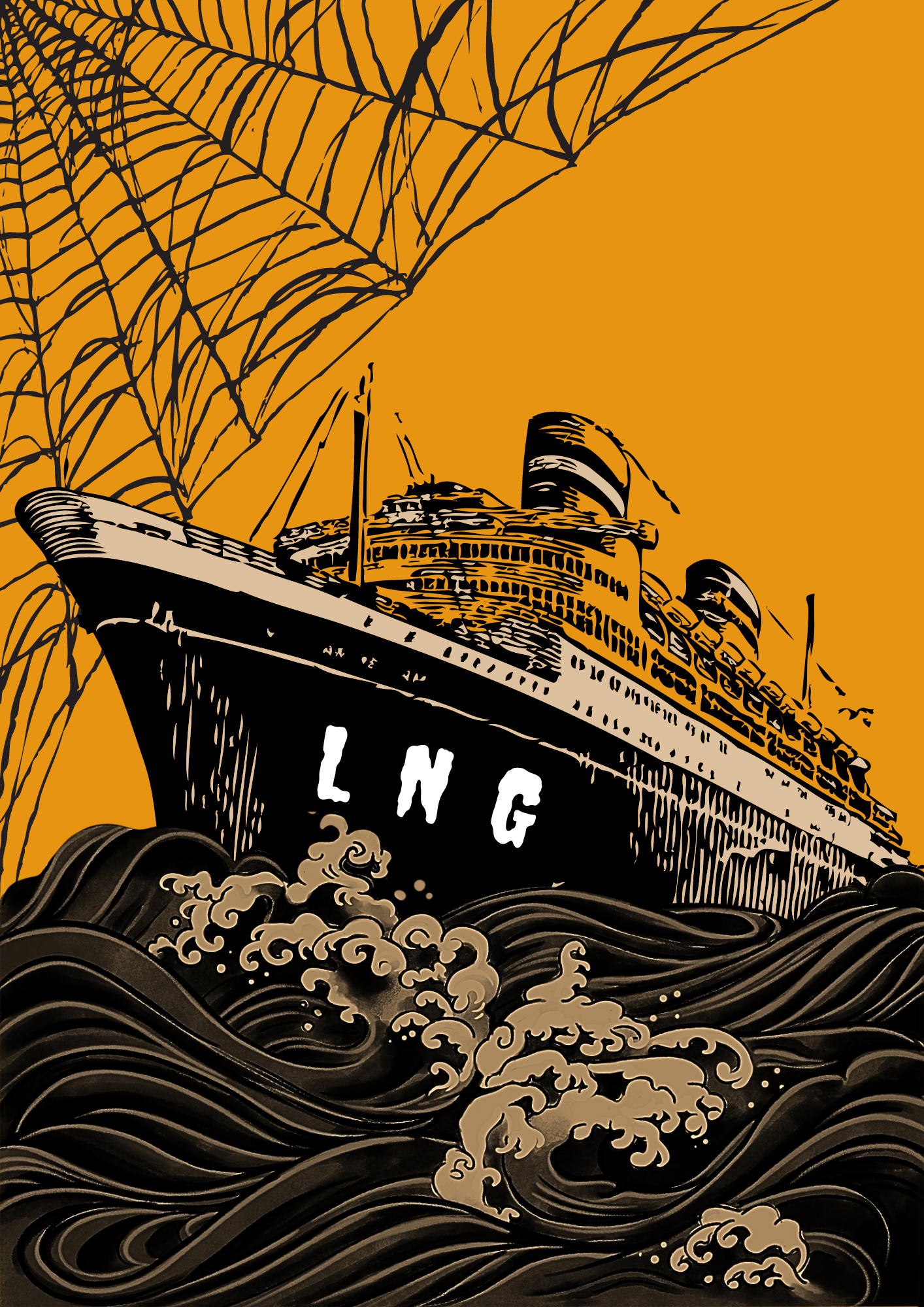Halloween Scaries: LNG fuels the Climate Crisis
Guest blog post by Kathryn Cussen. Say No to LNG welcomes submissions from passionate individuals who wish to contribute to the LNG shipping conversation.

Guest blog post by Kathryn Cussen. Say No to LNG welcomes submissions from passionate individuals who wish to contribute to the LNG shipping conversation. Contact [email protected] to join the movement and amplify your voice.
As we have reached October, countless lists of the scariest costume ideas for 2023 are going to start popping up, but this blog post already has you covered. If you want to be scary this Halloween, look no further than an LNG-powered ship, because while Annabelle, Jigsaw, and clowns can be nightmare-inducing, what’s scarier than the reality of our climate crisis?
Here are the top 5 reasons you'll be sure to win every costume contest this year:
- LNG is contributing on a large scale to greenhouse gas emissions. Ships (and their owners) that operate on LNG are lying to the world, claiming that because LNG has lower levels of associated air pollution, they are better for the environment. This is greenwashing. In reality, LNG is not better for the environment, as it is mostly made of methane, and methane is 80 times more impactful in trapping heat than CO2. The damage doesn’t just start with the utilization of LNG: during production, methane escapes into the atmosphere. The UN ventures that cutting LNG use up to 45% by 2030 could help in reaching the Paris Agreement goals; instead, LNG use is only increasing.
- LNG threatens marginalized communities’ daily lives and routines. “In the U.S., the public health hazards from air and water pollution, and risks associated with climate change, fall disproportionately on Black, Brown, Indigenous, and poor communities”. In addition to the multiplied risk of climate change on marginalized communities, these same communities are dealing with toxic byproducts from LNG terminals escaping into the environment, causing a negative impact on health. Studies show that neighboring areas in a 3-mile radius suffer from air pollutants at a higher rate, with the pollutants embedding in lungs, causing potentially long-term and life-threatening health concerns, among other health issues.
- LNG terminals are wreaking havoc all over the world. LNG terminals come in 2 varieties: exporting and importing. Exporting terminals work to liquefy the gas. Importing terminals bring the LNG back to a gaseous state. As importing terminals receive LNG from exporting terminals, they can be built nearly anywhere in the world, so long as there is coastal access as most transport is done by ship. While Gas Infrastructure Europe 2019 plans already showed a large expansion into LNG importing in Europe, the additional strain from the Russo-Ukrainian war, and Europe continually seeking new energy sources, have made the EU the largest importer of LNG in the world. With terminals across the Americas, Europe, Africa, Asia, and Oceania, the only continent left untouched is Antarctica, meaning that all the above-related health issues are spreading globally, in all the communities within reach of LNG terminals. For an image of LNG terminals worldwide, see this Global LNG Terminal Map (not exhaustive).
- Water scarcity is an ever-growing threat, and fracking only worsens it. Fracking is the process of extracting the gas that is ultimately liquefied into LNG. In fracking, millions of gallons of water are used each year for just 1 well, with the vast majority of the water becoming toxic waste, unusable for life. Typically, the water used in fracking is fresh water, which is a limited resource. Water scarcity is a problem not just of public health, but also of public safety, as water conflicts are often the end result of shortages in supply.
- Fossil fuels of any kind are not “alternatives”, and they are killing our planet. Fossil fuels, including LNG, are the leading cause of climate change (75%+ of greenhouse gas emissions). These statistics remain true regardless of the form of fossil fuel. The only true “climate friendly” alternatives to fossil fuels are ones that produce significantly fewer greenhouse gas emissions or none at all.
Guest blog post by Kathryn Cussen. Say No to LNG welcomes submissions from passionate individuals who wish to contribute to the LNG shipping conversation. Contact [email protected] to join the movement and amplify your voice.